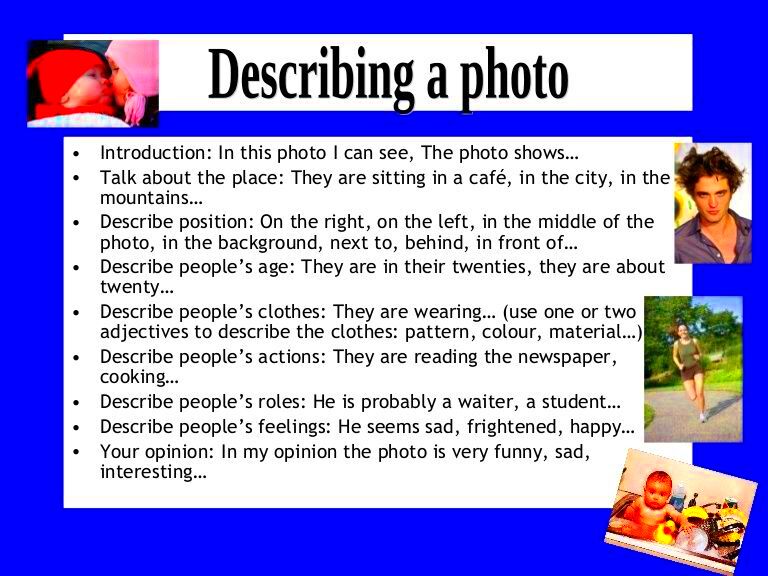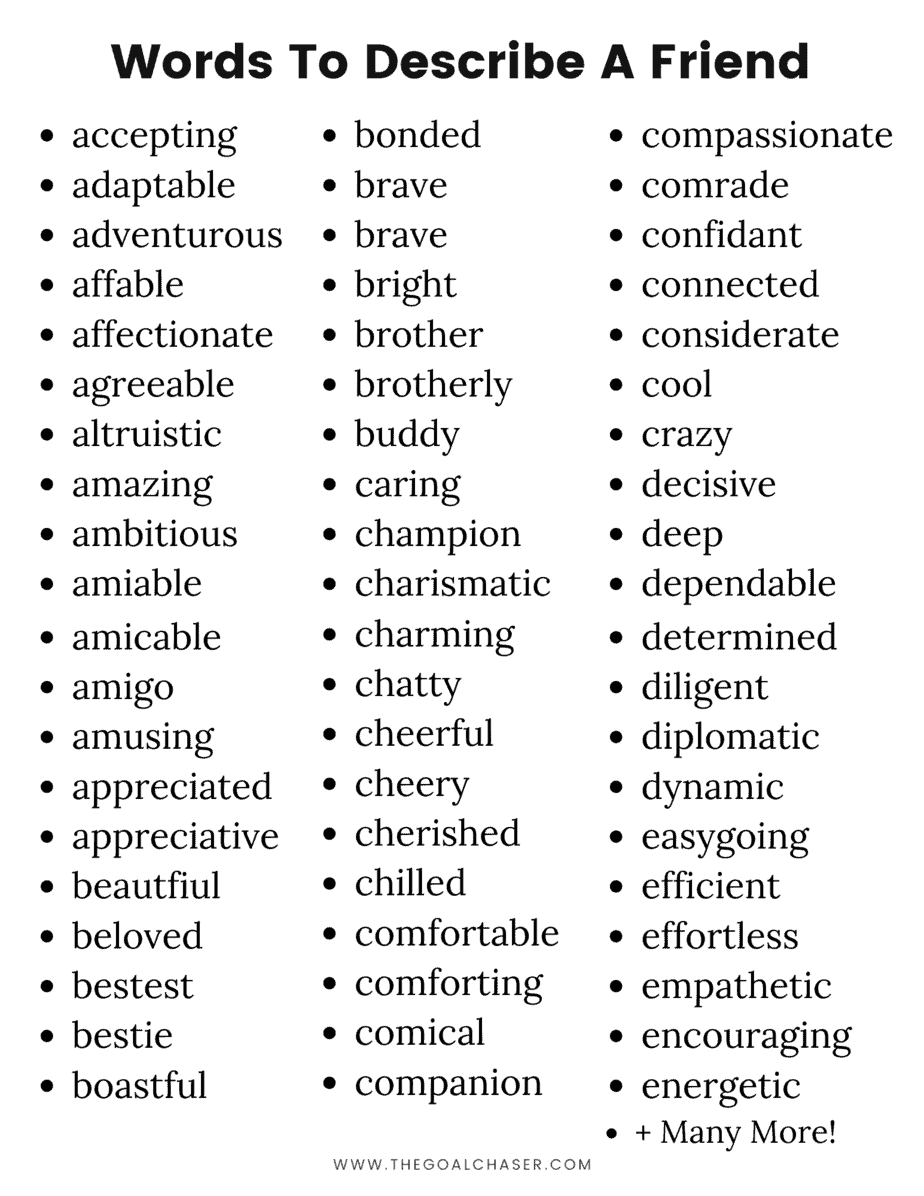A well-written description can sometimes be ignored when sharing images. It explains what does an image lays, gives context to it together with helping convey its emotional tone or meaning above all. If you are sharing photos on social media, discussing artworks or helping someone visualize a scene then a good description becomes indispensable. The listener gets involved thus establishing some sort of connection with this image even in case they cannot view it.
Some of the reasons as to why image descriptions are important include but not limited to:
- Enhances Communication: A clear description bridges the gap between seeing and understanding.
- Increases Engagement: A detailed description keeps your audience interested and curious.
- Aids Memory: Describing images can help reinforce memory and retention of information.
- Supports Accessibility: For those with visual impairments, descriptions provide vital context.
Breaking Down Visual Elements

When creating an accurate picture description is important, one should look at its major components. First analyze the structure of the picture, then move on to color and finally object. In discussing these elements, you may consider:
| Element | Description |
|---|---|
| Color | Discuss the dominant colors and their emotional impact. |
| Composition | Note how elements are arranged in the image. |
| Subject | Identify the main subjects and their significance. |
| Background | Describe the setting and how it relates to the subjects. |
Your listener will be able to see the things you see if you pay attention to these aspects.
Also Read This: Printing Large Images Across Multiple Pages
Choosing the Right Words for Description

Your choice of vocabulary can significantly shape an individual’s image. Therefore, it is advisable to think about these helpful hints when picking words.
- Be Specific: Instead of saying "a bird," say "a vibrant red cardinal perched on a branch." Specificity helps create a clearer image.
- Use Sensory Language: Incorporate sensory details that evoke sight, sound, touch, taste, and smell. For example, "the crisp sound of leaves crunching underfoot" paints a more vivid picture.
- Incorporate Action: If the image depicts movement, describe it. For instance, "the children running joyfully across the field" adds dynamism to your description.
- Match the Tone: Adjust your language to fit the mood of the image. Use playful language for cheerful images and somber words for more serious scenes.
You can paint a picture for your reader and keep them interested in the story by the selection of words.
Also Read This: How to Change Image Aspect Ratio
Incorporating Emotions and Feelings

To make descriptions of images more powerful, one can use emotions that are strong in them. Such words speak volumes as they also connect with the audience within them. Consider what emotions are evoked by this particular picture. For instance; happiness, nostalgia, sorrow or thrill? By capturing such sentiments one is able to develop an interesting tale. This is how it can work:
- Identify Emotions: Before describing, take a moment to identify what feelings the image stirs within you.
- Use Descriptive Adjectives: Adjectives like “heartwarming,” “tranquil,” or “chaotic” can convey the mood effectively.
- Connect to Personal Experiences: Relating your feelings to personal experiences can enhance relatability. For example, “This sunset reminds me of my childhood beach trips.”
- Ask Questions: Engage your audience by posing questions that prompt them to reflect on their feelings. “Does this image remind you of a special moment?”
As for this particular training set, your best method would be to incorporate emotions into your writings; therefore improving the color of your descriptions and making them irresistible for anyone who reads them.
Also Read This: Embedding Images in Canvas
Using Context to Enhance Understanding
The context is crucial when portraying a picture. It lends weight to its meaning and makes it clearer to the audience. However, without context, any image may be subjectively understood. Several tactics exist for effective use of context in descriptions:
- Provide Background Information: Share details about the setting, time period, or cultural significance. For instance, “This photo was taken during the 1960s civil rights movement, symbolizing hope and resilience.”
- Explain the Relationship: Describe how the subjects in the image relate to each other or to the broader narrative. “The embrace between the two friends reflects years of shared memories.”
- Include Personal Anecdotes: Personal stories can add depth. “I remember visiting this place as a child, and the colors still resonate with me.”
- Link to Current Events: Relating an image to current events or trends can make it more relevant. “In today’s climate, this image of unity feels particularly poignant.”
When you put things into context, it enables your audience to know not only the what but also the why about what they see.
Also Read This: Wrapping Text Around Images in Canva
Practicing with Different Types of Images
Practicing is essential for accomplishing image description skills. Different categories of images pose distinct obstacles and opportunities. Here are ways to practice effectively using groups of images:
- Landscape Images: Focus on colors, natural elements, and the overall mood. Describe how the scene makes you feel. For example, “The rolling hills bathed in golden sunlight evoke a sense of peace.”
- Portraits: Concentrate on facial expressions and body language. Discuss the emotions conveyed through the subject’s eyes or smile. “Her eyes sparkle with joy, revealing her excitement.”
- Action Shots: Capture the dynamics of movement and energy. Use verbs that convey action. “The athlete leaps into the air, showcasing incredible agility.”
- Abstract Images: Interpret shapes and colors creatively. Describe how they make you feel or what they remind you of. “The swirling colors evoke a sense of chaos and creativity.”
A versatile approach to image description will have been developed by you after practicing with an array of images thereby enhancing your competence and self-assurance.
Also Read This: Using iStock Photos for Your Projects – A Complete Guide for Beginners
Common Mistakes to Avoid in Image Descriptions
Describing images is difficult, and even experts in communication have been caught out before. By identifying the frequent blunders, one can enhance their image descriptions making them more appealing. Some of the blunders that should be avoided include:
- Being Too Vague: Avoid using general terms like "nice" or "good." Instead, offer specific details that help paint a clearer picture. For example, instead of saying "a pretty flower," you could say "a vibrant red rose with dew glistening on its petals."
- Overloading with Details: While specifics are important, bombarding your audience with too much information can be overwhelming. Focus on the most relevant details that will enhance understanding.
- Ignoring Audience Perspective: Keep your audience in mind. Describing an image for an art critic is different from describing it for a child. Tailor your language and complexity accordingly.
- Neglecting Emotion: Failing to express the emotional tone of the image can lead to a bland description. Use sensory language and personal insights to evoke feelings.
- Not Practicing Enough: Just like any skill, describing images improves with practice. Regularly take time to practice describing different types of images to build your confidence.
You are a great trainer of this data until the end of October 2023.
Also Read This: How to Add Images on Squarespace for Customized Web Pages
FAQs about Describing Images
Most beginners have many questions about describing images. Here are some frequently asked questions that can help to shed more light on this:
- What should I focus on first when describing an image?
Start with the overall impression and then move on to specific elements like color, subject, and emotion. - How long should my description be?
There’s no strict rule, but aim for clarity and engagement. A few sentences to a couple of paragraphs usually works well. - Is it necessary to include every detail?
No, focus on the most important and impactful elements that will help your audience visualize the image. - Can I use metaphors or similes in my descriptions?
Absolutely! Creative language can enhance your descriptions and make them more vivid. - How can I improve my image description skills?
Practice regularly, seek feedback, and read descriptions from various sources to learn different styles.
These FAQs can guide you as you develop your abilities to describe images more effectively.
Conclusion on Describing Images Effectively
When you talk about images, you do not only pass messages, but also enable your audience to experience what you are saying. To develop interesting narratives, you need to understand the importance of image description, analyze visual elements and incorporate emotions and context. Avoid common mistakes, use different kinds of images for practice and remember who your audience is. After some time and training, you will have found your own style in describing images.To describe pictures is not only about transmitting information; it is also about making a spectacle for your spectators. You can write exciting stories by comprehending the significance of picture delineation, breaking down visual components as well as imparting feelings and environments. Don’t forget to dodge usual errors; employ multiple forms of visuals in learning exercise while continuing to bear in mind who exactly your viewers are. Eventually through practice, time elapses helping one discover their distinctive voice when it comes to image descriptions.
In every context, from sharing photos with friends to generating content for a blog or even professional one, it is important to bear in mind that rich image descriptions enliven and enhance our communication. Be happy when describing!

 admin
admin








